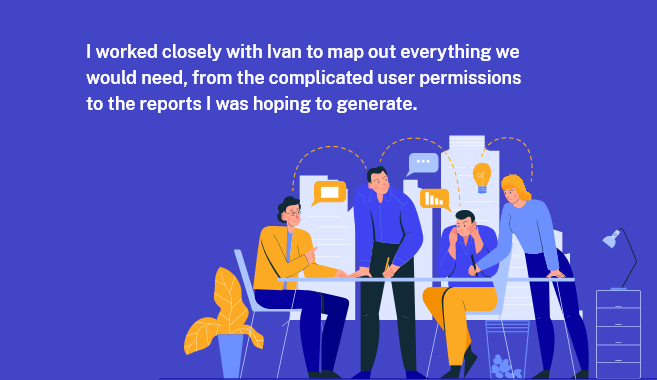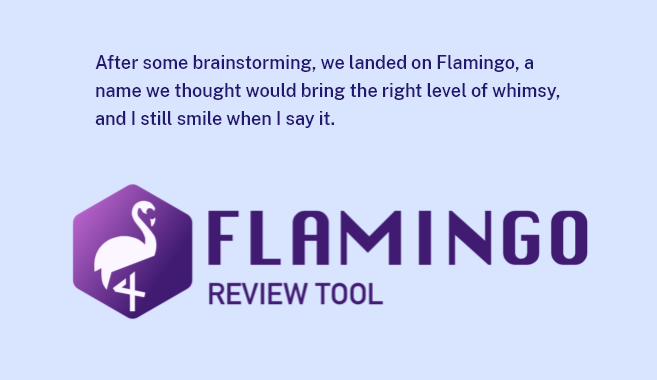How Internal Projects Can Replace Ready-Made Products, Changing Team Dynamics for the Better
06.09.2021Pandemic or no, every business is looking for ways to run more efficiently. People Strategy is no exception. DOOR3 is committed to the well-being of our employees and keeping our teams happy and humming along. At the same time, we also try to bring our perspective as a technology consultancy to solving problems across departments. And as such, when it came time to reevaluate our performance review platform, I realized there was a way we could do it better.
In the past year, we’ve revisited a number of tools and figured out there was a way to work smarter. For instance, we’re all comfortable working in JIRA (Atlassian’s issue-tracking product), so we moved our applicant-vetting process there and fully replaced our existing expensive applicant tracking system. Our performance review needs were more complicated however. While we’d been paying for a third-party system, it was pretty basic. That meant I spent a lot of time chasing down managers for reviews and trying to parse the data to get at the insights I really needed. It became clear we needed a different solution to improve talent recognition and team dynamics. Luckily, I work with an incredibly gifted group of software engineers and, with the help of people across our teams, we were able to quickly build and launch a new performance review system from which we are already realizing the benefits.
As organizations consider the shift from ready-made products to internal projects, incorporating strategic business analysis becomes a vital aspect of this transformation, fostering better team dynamics and informed decision-making.
A Little Help From my Colleagues
Annual reviews looked a little different for us this year, as I’m sure they did for many organizations. With everything being completely online and spread across our staff’s work-from-home setups, security, and data protection were of the utmost importance. Any platform we created that wasn’t up to our rigorous standards would be a non-starter. We also wanted our new HR portal to be user-friendly and, most importantly for my purposes, be able to generate the reports and analysis I needed. While a Google Form might have lived up to some of these requirements, pulling aggregate results from a Google Sheet would have been an absolute nightmare, not to mention the messy web of permissions needed.

One of our software developers, Ivan Berezhnov, had been involved in setting up our new recruitment JIRA and was eager to help when it came time to create our new performance review platform. I worked closely with Ivan to map out everything we would need, from the complicated user permissions to the reports I was hoping to generate.
We started the project as we would any software-development effort. I knew exactly what I needed in the new tool and was able to articulate it so Ivan could create requirements. We created a matrix describing all of our users, ranging from individual employees to primary and secondary reviewers, on up to system admins, detailing exactly what functions each role would need to accomplish and what level of access was appropriate. Our performance reviews allow for multiple levels of feedback, from self-reviews to 360 feedback where team members can review anyone they work with, so we had to allow for a lot of complexity.
Ivan designed and built a very straightforward platform atop Drupal 9 (Content Management Software) using Webforms. I weighed in on the look and feel and functionality. It was especially important to build the forms in a way that would ensure reviewers were giving the right amount of feedback on employees to help us properly evaluate performance. Based on what we’d heard in the past, we simplified lengthy forms to only 10 questions, but organized those to help structure more productive review conversations. We also created unique questions for each team to evaluate their performance within the context of their practice. Last but not least, we asked our teams across offices to try the new portal out before the actual review period and give us feedback on its usability.
Getting the Look Right

The last step was to give our platform a friendly feel and the polish of a proper enterprise application. While the forms as they were provided the functionality we needed, they also felt a little utilitarian. We worked to bring some product discipline to the project and decided a name was in order. After some brainstorming, we landed on Flamingo, a name we thought would bring the right level of whimsy, and I still smile when I say it. Plus our teams across continents and languages all understand what the name means, which was important to us. Since bright pink felt a little aggressive, we gave Flamingo a purple interface and worked to add some helpful navigational elements. And I’m extremely proud of the stylish logo Ivan designed to bring the whole experience together.
After just a month from original idea to development and extensive testing and tweaking, we were excited to roll the platform out. We recorded how-to tutorial videos and trained the whole team, ensuring the launch went smoothly. And, I’m happy to say, the response has been overwhelmingly positive. Our teams loved having the ability to give 360 feedback and hear from colleagues who didn’t generally get to weigh in on their performance or give kudos to teammates outside their direct chain of command.
Now I’m also reaping the benefits. Our performance conversations went smoothly, with auto reminders to nudge our more busy managers and plenty of efficiencies with Flamingo’s built-in automation. Plus now I have more robust reports than ever before to view performance across the organization. It’s allowed us to make dynamic decisions about our staffing, and let me focus more on finding the insights in our team dynamics rather than chasing down employees to complete their reviews.
Once we’re able to import prior years’ results, we’ll see even more benefits. And we’re exploring future improvements like creating profile pages for employees with “badges” for their unique talents, so our teams can discover and tap into each other’s strengths. We’re also looking at the ability to add testimonials and even tweaking the experience so our project managers can utilize it for end-of-project retrospectives.
We’re eager to explore all the benefits that a custom platform like Flamingo can bring to our HR capabilities. And it’s just another example of how tapping into your organization’s unique expertise can open up new possibilities, while also cutting present costs and creating a significant investment in the homegrown tool in the long run. By having the space to think creatively, we were able to create a great asset for our business, and I know everyone who contributed was very proud of their work. We’re excited to see how harnessing our teams’ unique skills and expertise can revolutionize our operations for the next round of performance reviews—and beyond.
Find Your Own Flamingo
We’re proud of what we built and wanted to share it for other organizations to adapt to their needs.
To download the code: https://github.com/door3/flamingo



